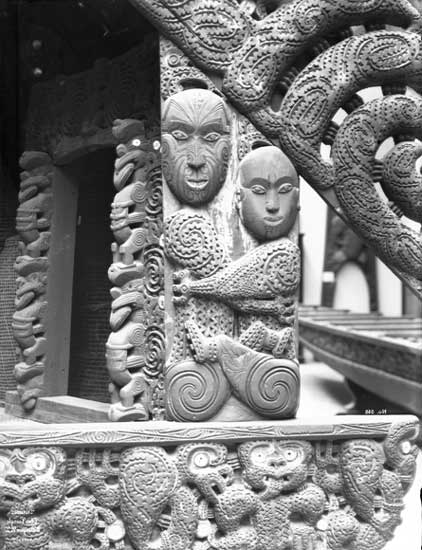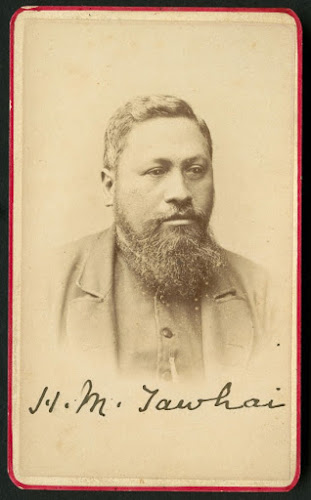The Sexual Frontier - Contrasting Māori and European Attitudes towards Sex and Nudity in the Colonial Era
In pre-contact
Māori society young unmarried men and women had a high degree of sexual
freedom. With the exception of a few high-born women who were ceremonially bethrothed,
pre-marital sex was considered socially acceptable, though blatant promiscuity
was frowned upon and a certain level of discretion expected.
Sex was considered
a normal and healthy part of every day life, with no particular taboos around
it. Copulating couples were depicted in carvings and bawdy stories and waiata
concerning sexual exploits or the size of men’s penises were common.
 |
| Te Puawai o Te Arawa, 1905, 1/1-003279-G, ATL |
That relative
openness extended to same-sex relationships, of which there is ample evidence
from waiata and other traditional sources. Tutanekai, for example, who famously
swam to Mokoia to be with Hinemoa, was also known to have had an initimate male
companion known as Tiki. (By contrast, in the eighteenth-century Royal Navy
death was the mandatory penalty for anyone found guilty of sodomy).
In Māori culture,
female genital exposure was considered indecent, though women would sometimes
deliberately expose themselves through whakapohane intended to ridicule or
insult those witnessing it. There are early examples of European visitors who
described what they thought were lascivious gestures on the part of Māori women
exposing themselves to the newcomers, when it fact they were demonstrating not
arousal but contempt.
On the other hand
it was perfectly natural for women to remain naked above the waste, especially
in hot conditions or when working or dancing. Under the influence of the
missionaries that eventually changed. By 1840 it was said to be fashionable for
young Māori women in the Bay of Islands to cover their breasts in the European
manner, though this new trend was fiercely resisted by older women and it took
some time before it became standard.
Because women were
regarded as noa, or free from tapu, it was common for the female vulva to be
depicted above the entrance way to meeting houses, in this way removing the
tapu from anyone who passed underneath. Penises, sometimes erect, were also
depicted in wood carving as a sign of virility and strength. In some cases
copulating couples were also depicted.
All of these
things were deeply troubling for European missionaries, and even Victorian
museum curators, who went out of their way to have the offending carvings
altered or removed, and depictions of sexual organs or acts obliterated, in
accordance with their own sensibilities.
In British
society, and especially in the Victorian era, sex was regarded as something
shameful and not to be discussed. Although pre-marital sex did occur, it was
not considered socially acceptable. Chastity was expected and unmarried mothers
were social outcasts. Prostitution was rife, especially in some of the port
towns that those who sailed to New Zealand with James Cook came from. That was part
of a weirdly repressive double-standard that assumed men could not help
themselves while fallen women were the victims of men’s sinful lusts.
So to arrive in the
South Pacific and find the old rules thrown out the window, and semi-naked
women not only free from shame but keen to engage in sexual relationships was a
revelation for early visitors from Europe.
 |
| Solider asleep in a whare, being watched over by a Māori woman, c.1845-1858, A-113-034, ATL |
The crew of the Endeavour readily entered into multiple
sexual encounters with Māori women. It was customary within Māori society for
important visitors to be offered sexual hospitality, though married women were
strictly off limits, and the early encounters with British and French explorers
were consistent with this pattern. (Later, many missionaries visiting Māori
settlements were themselves offered sexual hospitality). By the 1820s, at the
Bay of Islands and elsewhere, there were extensive sexual contacts with
visiting whalers. In some cases this could be quite coercive, involving young
women captured from other tribes and prostituted to provide a source of trade
for local people.
But in many other
instances young unmarried women entered into relationships with the sailors of
their own accord, in what some observers described as ‘temporary unions’ or
marriages that tended to last the duration of the whaler’s stay in the
district. These kinds of relationships were consistent with the high level of
freedom that unmarried people had in pre-contact Māori society.



Comments
Post a Comment